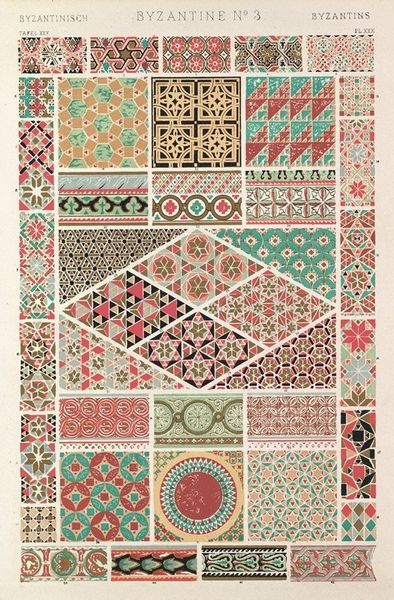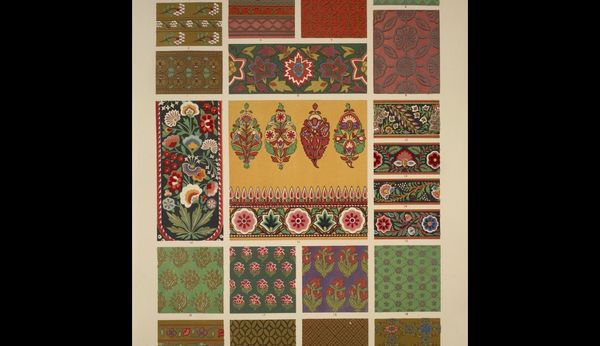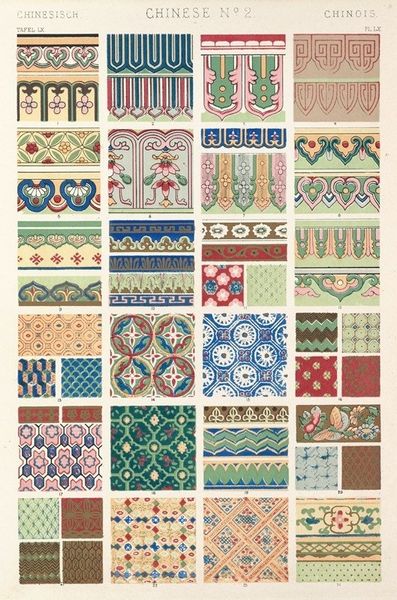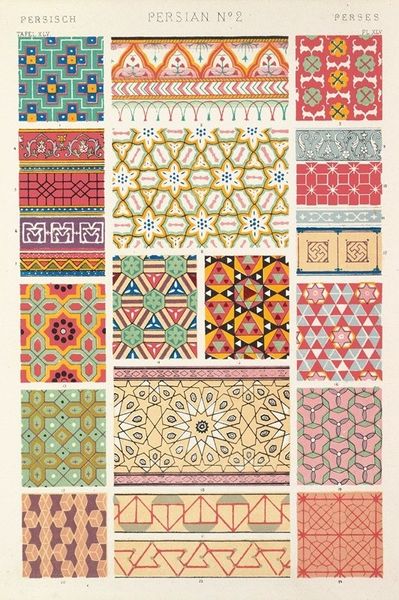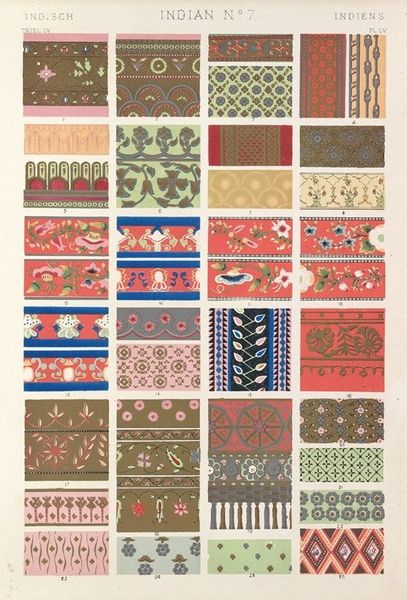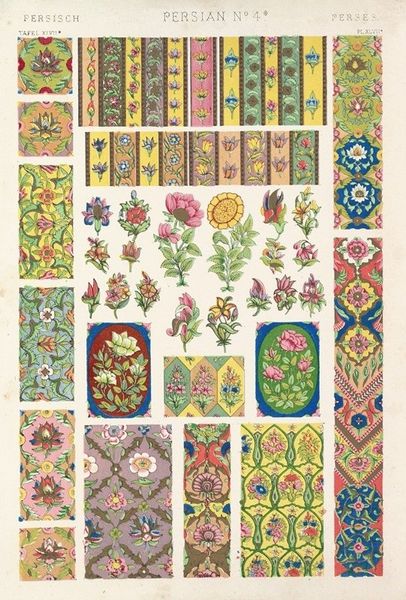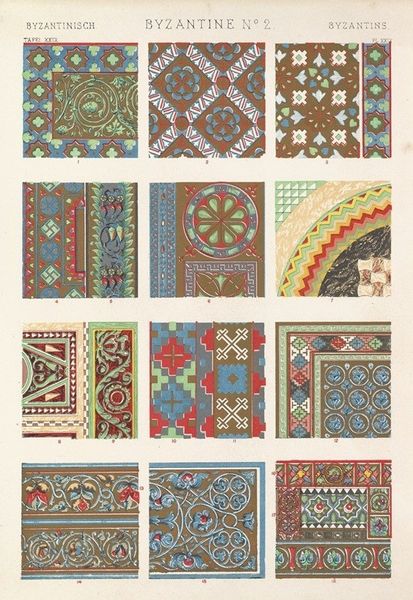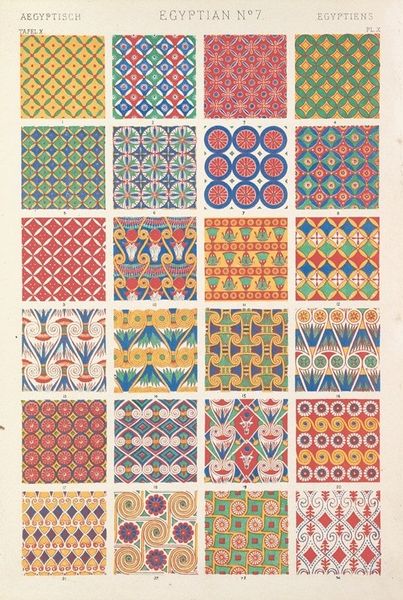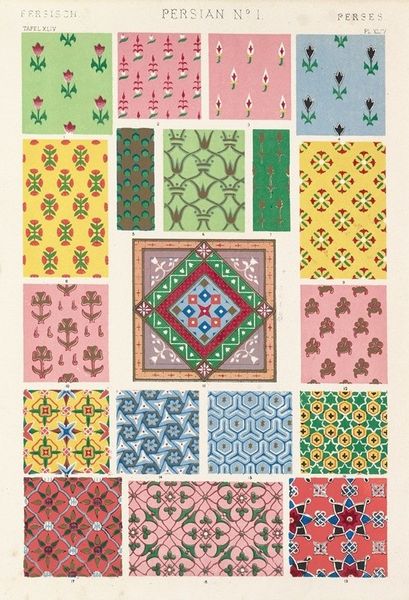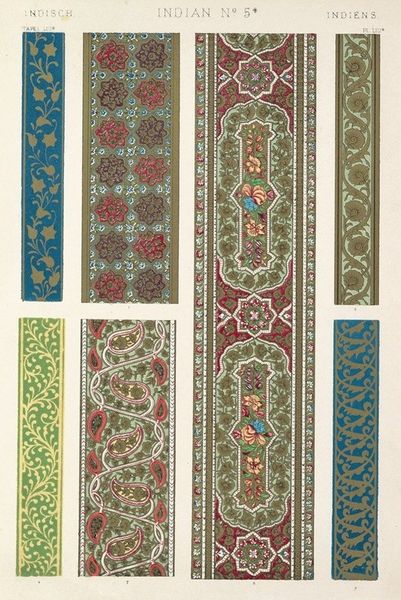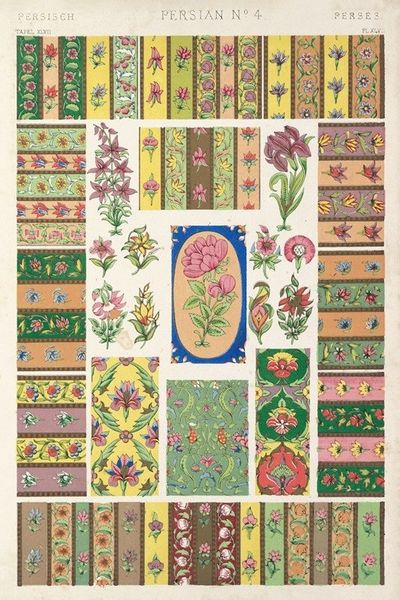
graphic-art, print
#
pattern heavy
#
pattern-and-decoration
#
graphic-art
# print
#
collage layering style
#
fashion and textile design
#
pattern background
#
pattern design
#
fabric design
#
pattern repetition
#
textile design
#
decorative-art
#
imprinted textile
#
layered pattern
Copyright: Public Domain: Artvee
"Indian No. 4" is a chromolithograph plate made by Owen Jones in the 19th century, showcasing various decorative patterns. It’s part of a larger project rooted in the visual culture of the British Empire. Jones was an influential figure in the Victorian design reform movement, advocating for the integration of design principles from different cultures. Jones’s work reflects the Victorian fascination with exoticism and the desire to classify and understand other cultures through their visual motifs. Created in Britain, the image draws from Indian decorative arts, adapting and reinterpreting them for a Western audience. The patterns, featuring stylized flowers and geometric shapes, were originally found in textiles, architecture, and manuscripts from India. Jones's project was supported by the institutions of colonialism in the belief that they could inspire British design and industry. Understanding this print requires us to consider the complex dynamics of cultural appropriation, and the role of design in shaping perceptions of national identity. The resources available at the V&A's National Art Library can reveal the ways in which Jones’s pattern book informed Victorian aesthetics.
Comments
No comments
Be the first to comment and join the conversation on the ultimate creative platform.
